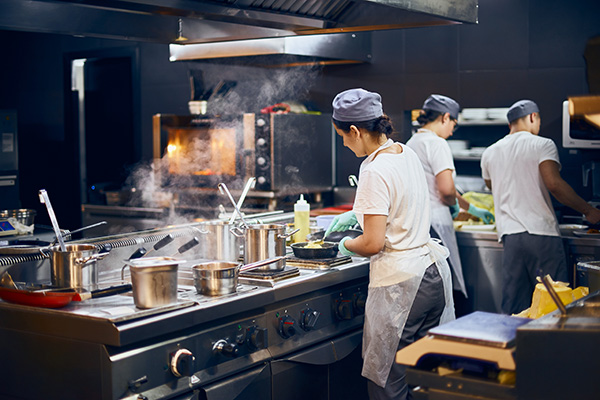5 Questions About Ghost Kitchens

RR got with industry insider Brad Lancaster, CEO of Restaurant Supply Store, for his thoughts on the ongoing rise of ghost kitchens.
1. How would you describe the ghost kitchen trend, and what are some of the major benefits and challenges?
BL: The ghost kitchen trend, also known as cloud or virtual kitchens, can be described as a revolutionary shift within the restaurant industry, driven by the recent boom in food delivery services. These are essentially commercial cooking spaces that solely cater to online food deliveries, without the provision for dine-in guests. Major benefits of ghost kitchens include comparatively lower overhead costs, as they circumvent the need for a high-footfall location, extensive restaurant layout, or front-house staff. They also offer substantial flexibility by allowing multiple virtual restaurants to operate from one location. Challenges, however, do include stiff competition in the online delivery space, an initial reliance on third-party delivery services, and the absence of traditional in-dining experiences that build brand identity and customer loyalty.
2. What are the costs involved in running a ghost kitchen and how can profits compare to a typical restaurant operation?
BL: Financially speaking, the costs involved in operating a ghost kitchen are typically lower than in traditional restaurants, largely due to savings in rent, interior design, furniture, and staff salaries. But it's important to consider costs associated with kitchen equipment, raw materials, packaging, delivery, and marketing — including potential commissions for delivery platforms. Profits could surpass those of typical restaurants in high-density urban locations, where delivery orders are soaring and the reduced costs yield higher margins.
3. What foods / menu types are best suited to ghost kitchens and what are some good examples? Plus where geographically is the most growth happening?
BL: Ghost kitchens can cater to a broad range of culinary styles but they lend themselves particularly well to foods that can withstand the wear and tear of delivery without compromising quality. This includes cuisines like pizza, Indian, Chinese, and Thai, along with concepts oriented around burgers, wings, or bowl meals. Some successful examples include renowned chains like Kitchen United and CloudKitchens. In terms of geography, the most noticeable growth is happening in densely populated urban areas due to the higher potential for delivery order volumes. Emerging markets like Asia and the Middle East also show promising growth due to rapid urbanization and digital adoption.
4. How can ghost kitchens best manage the online ordering and delivery aspects of the business for success? And how do they stand out against typical restaurants?
BL: Online ordering and delivery management are crucial aspects of the success of ghost kitchens. Utilizing robust digital platforms that offer seamless user experiences for menu browsing, order placement, and real-time delivery tracking is indispensable. Moreover, forming strategic partnerships with major delivery service providers can enhance visibility and reach. Ghost kitchens can differentiate themselves by creating unique, delivery-friendly menu items, focusing on packaging sustainability and quality, and providing consistent and speedy delivery services.
5. What are your predictions for the future of ghost kitchens?
BL: Looking to the future, the ghost kitchen trend is expected to grow exponentially, driven by the surge in online food delivery and evolving consumer behaviors. With advancements in technology and companies' abilities to adapt to an increasingly digital world, traditional dine-in restaurants could also look to incorporate a ghost kitchen facet into their existing operations.
Bonus Insight - Anything else we should know about ghost kitchens?
BL: One should note that while ghost kitchens are typically leveraged for delivery, they can also effectively serve as off-site preparation spaces for catering large events or for testing new menu items before launching them in a full-scale restaurant. Their flexibility and cost-effectiveness make them an intriguing growth area within the dynamic landscape of the food industry.
 Brad Lancaster, CEO of Restaurant Supply Store, is a food service industry expert with more than a decade of experience. RestaurantSupply.com is an invaluable partner for the restauranteur, offering not only an extensive catalog of top-quality commercial equipment and restaurant supplies but also an understanding of the varying financial needs of businesses.
Brad Lancaster, CEO of Restaurant Supply Store, is a food service industry expert with more than a decade of experience. RestaurantSupply.com is an invaluable partner for the restauranteur, offering not only an extensive catalog of top-quality commercial equipment and restaurant supplies but also an understanding of the varying financial needs of businesses.


